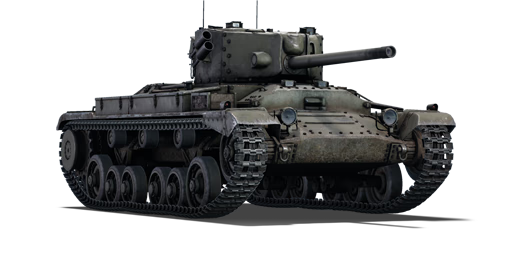

Ground Vehicles
Valentine IX
II
Rank
AB
3.0
RB
3.0
SB
3.0
Battle rating
Great Britain
Research country
Medium tank
Main role
5,600

Research
22,000

Purchase
General information
The Valentine IX is a British medium tank. It was introduced along with the initial British tree line in Update 1.55 "Royal Armour".
At its BR, the Valentine's protection starts to let it down a bit, uptiers can bring guns powerful enough to cut through the Valentine's armour anywhere. Still, the protection is fairly good, especially on the turret cheeks but the hull is somewhat weaker. Mobility is poor. However the Mark. IX sports the formidable 6-pounder gun, which can reliably get through the armour of many vehicles. The Valentine's small profile also allows it to be "sneaky".
Camouflages
Survivability and armour
Armour
front / side / back
Hull
60 / 43 / 60 mm
Turret
65 / 60 / 65 mm
Visibility
77 %
Crew
3 persons
Support systems
Mobility
Max speed
Forward
2427 km/h
Backward
3 km/h
Power-to-weight ratio
9.58.418.214.8 hp/t
Engine power
165146315256 hp
Weight
17.3 t
Optics
Gunner
Commander
Driver
Optics zoom
1.9x–3.5x
—
—
Armaments
57 mm 6pdr OQF Mk.III cannon
Ammunition
53 rounds
Reload
basic crew → aces
5.2 → 4 s
Vertical guidance
-8 / 17°
Turret Rotation Speed
basic crew → aces
Horizontal
11.29.521.115.2 → 1613.630.121.8 °/s
Vertical
2.82.29.86.3 → 43.2149 °/s
| Ammunition | Type | Armor penetration (mm) at a distance: | |||||
|---|---|---|---|---|---|---|---|
| 10 m | 100 m | 500 m | 1000 m | 1500 m | 2000 m | ||
| AP | 101 | 97 | 82 | 66 | 53 | 43 | |
| HE | 9 | 9 | 9 | 9 | 9 | 9 | |
| AP | 108 | 104 | 87 | 70 | 57 | 46 | |
| APC | 110 | 106 | 89 | 72 | 59 | 48 | |
| APCBC | 122 | 118 | 101 | 84 | 70 | 58 | |
Economy
Repair cost
Basic → Reference
AB
684 → 925 

RB
772 → 1,045 

SB
948 → 1,283 

Crew training
6,300 

Experts
22,000 

Aces
210 

Research Aces
220,000 

Reward multiplier
AB / RB / SB
50 / 60 / 70 % 

124 % 

Total cost of modifications
10,330 

13,810 

Talisman cost
750 

Research order:
Mobility | |
|---|---|
Protection |
|---|
Firepower | ||
|---|---|---|
Rating by players
You must play more than 3 battles for the last week and more than 10 battles in a vehicle to rate it.
Like:
16
Armor protection:
Not enough ratings
Survivability:
Not enough ratings
Mobility:
Not enough ratings
Armament:
Not enough ratings
Balance:
Not enough ratings
Tips & Tricks
This space is currently empty
Do you know any interesting vehicle features?
Loading...
No articles about this vehicle yet
Become the first author and get rewards!
Write a guide, tell about interesting historical facts, make a tutorial or simply an interesting post.
No more content